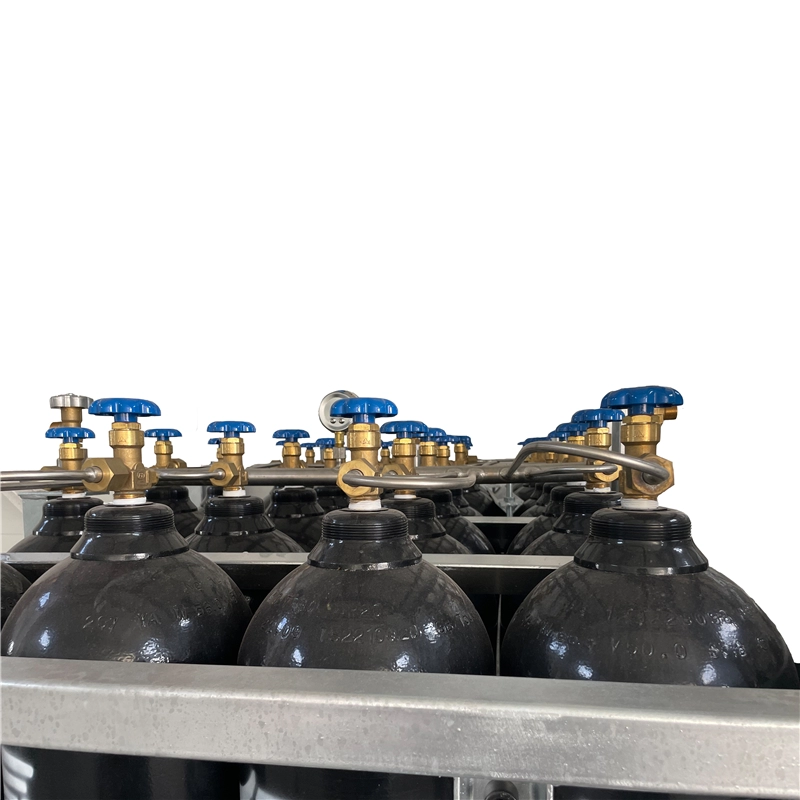why liquid nitrogen is used in cryopreservation?
1. Why use liquid nitrogen as a refrigerant?
1. Because the temperature of liquid nitrogen itself is very low, but its nature is very mild, and it is difficult for liquid nitrogen to undergo chemical reactions, so it is often used as a refrigerant.
2. Liquid nitrogen vaporizes to absorb heat, lower the temperature, and can be used as a refrigerant.
3. Generally, ammonia is used as refrigerant and water as absorbent.
4. The ammonia gas is cooled by the condenser to become liquid ammonia, and then the liquid ammonia enters the evaporator to evaporate, and at the same time absorbs heat from the outside to achieve the purpose of refrigeration, thus forming a continuous diffusion absorption refrigeration cycle.
5. Nitrogen can be used as a refrigerant in “cryogenic” conditions, that is, close to absolute 0 degrees (-273.15 degrees Celsius), and is generally used in laboratories to study superconductivity.
6. In medicine, liquid nitrogen is commonly used as a refrigerant to perform operations under cryoanesthesia.
7. In the high-tech field, liquid nitrogen is often used to create a low-temperature environment. For example, some superconducting materials only obtain superconducting properties at low temperatures after being treated with liquid nitrogen.
8. The temperature under the normal pressure of liquid nitrogen is -196 degrees, which can be used as an ultra-low temperature cold source. The low-temperature crushing of tires, gene storage in hospitals, etc. all use liquid nitrogen as a cold source.
2. How does liquid nitrogen preserve cells?
The most commonly used technique for cell cryopreservation is the liquid nitrogen cryopreservation method, which mainly adopts the slow freezing method with an appropriate amount of protective agent to freeze cells.
Note: If the cells are directly frozen without adding any protective agent, the water inside and outside the cells will quickly form ice crystals, which will cause a series of adverse reactions. For example, dehydration of the cells increases the local electrolyte concentration, changes the pH value, and denatures some proteins due to the above reasons, causing the internal space structure of the cell to be disordered. Causes damage, mitochondrial swelling, loss of function, and disturbance of energy metabolism. The lipoprotein complex on the cell membrane is also easily destroyed, causing changes in the permeability of the cell membrane and loss of cell contents. If more ice crystals are formed in the cells, as the freezing temperature decreases, the volume of the ice crystals will expand, resulting in irreversible damage to the spatial configuration of the nuclear DNA, resulting in cell death.
The latent and sensible heat absorbed by the liquid nitrogen food in contact with the food causes the food to freeze. Liquid nitrogen is ejected from the container, suddenly changes to normal temperature and pressure, and transforms from liquid to gaseous state. During this phase change process, liquid nitrogen boils and evaporates at -195.8 ℃ to become gaseous nitrogen, and the latent heat of evaporation is 199 kJ/kg; if -195.8 When the temperature rises to -20 °C under nitrogen at atmospheric pressure, it can absorb 183.89 kJ/kg of sensible heat (the specific heat capacity is calculated as 1.05 kJ/(kg?K)), which is absorbed by the heat of vaporization and sensible heat absorbed during the liquid nitrogen phase change process. The heat can reach 383 kJ/kg.
In the process of food freezing, because a large amount of heat is taken away in an instant, the temperature of the food is rapidly cooled from the outside to the inside to freeze. Liquid nitrogen quick-freezing technology uses liquid nitrogen as the cold source, which has no harm to the environment. Compared with traditional mechanical refrigeration, it can achieve lower temperature and higher cooling rate. Liquid nitrogen quick-freezing technology has fast freezing speed, short time, and The food is of good quality, high safety and pollution-free.
Liquid nitrogen quick-freezing technology has been widely used in the quick-freezing of aquatic products such as shrimp, whitebait, biological crab, and abalone. Studies have shown that shrimp treated by liquid nitrogen quick-freezing technology can maintain high freshness, color and taste. Not only that, some bacteria may also be killed or stop reproduction at low temperature to achieve higher sanitation Require.
Cryopreservation: Liquid nitrogen can be used for cryopreservation of various biological samples, such as cells, tissues, serum, sperm, etc. These samples can be preserved for a long time at low temperature and restored to their original state when required. Liquid nitrogen cryopreservation is a commonly used storage method, which is often used in biomedical research, agriculture, animal husbandry and other fields.
Cell culture: Liquid nitrogen can also be used for cell culture. During cell culture, liquid nitrogen can be used to preserve cells for subsequent experimental operations. Liquid nitrogen can also be used to freeze cells to preserve their viability and biological properties.
Cell storage: The low temperature of liquid nitrogen can maintain the stability and integrity of cells, while preventing cell aging and death. Therefore, liquid nitrogen is widely used in cell storage. Cells preserved in liquid nitrogen can be recovered quickly when needed and used for various experimental manipulations.
The application of food-grade liquid nitrogen is like liquid nitrogen ice cream, liquid nitrogen biscuits, liquid nitrogen freezing and anesthesia in medicine also require high-purity liquid nitrogen. Other industries such as chemical industry, electronics, metallurgy, etc. have different requirements for the purity of liquid nitrogen.





